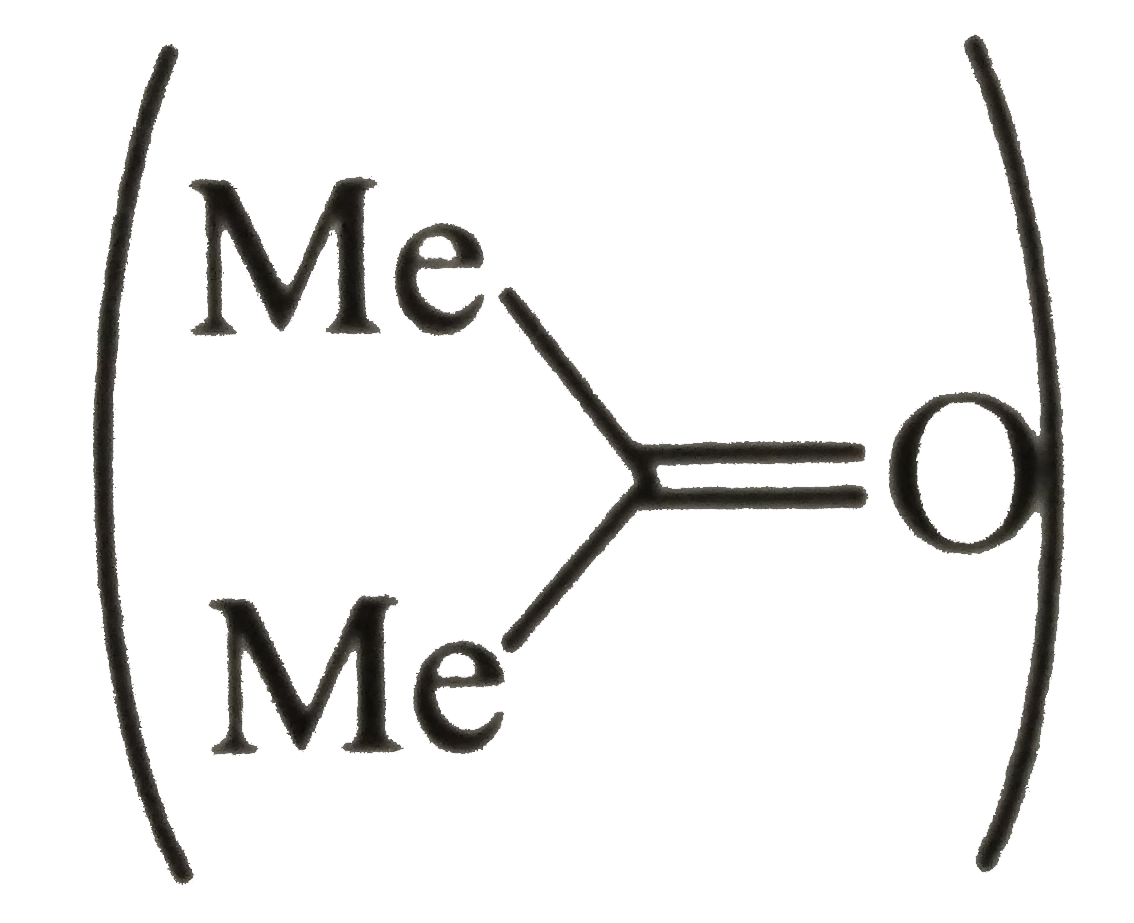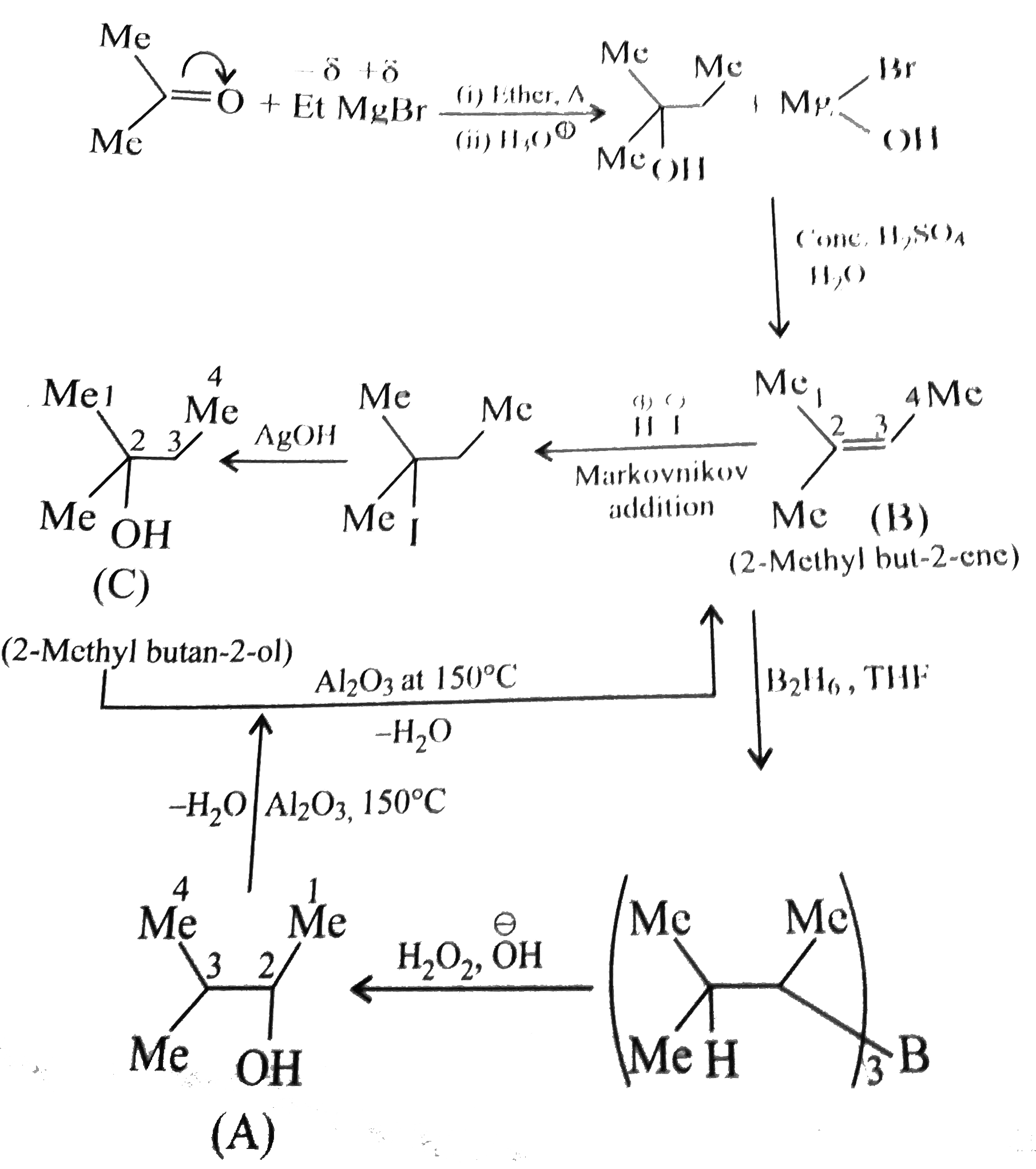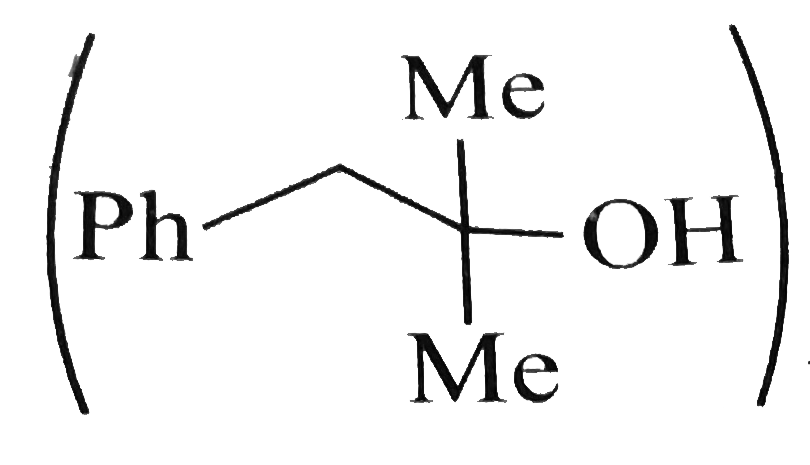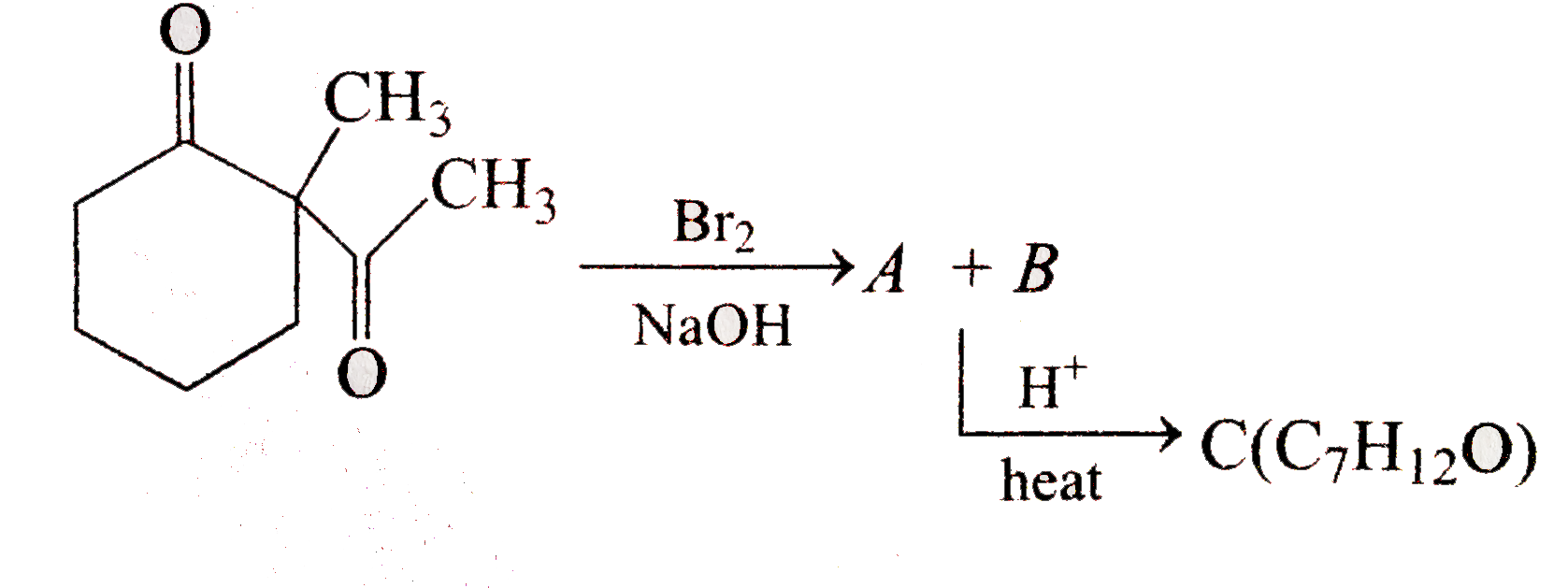
(A) and (C) are isomers, (B) can be obtainedn by the products of the reactions of EtMgBr and acetone  . Give the structures of (A),(B), and (C).
. Give the structures of (A),(B), and (C).
Text Solution
First find the structure of (B).

(A) and (C) are isomers
A⇒3-Methylbutan-2-ol
B⇒2-Methyl butan-2-ene
C⇒2-Methyl butan-2-ol
|
Topper's Solved these Questions
- GRIGNARD REAGENTS AND ORGANOMETALLIC REAGENTSBOOK - CENGAGE CHEMISTRY ENGLISHCHAPTER - GRIGNARD REAGENTS AND ORGANOMETALLIC REAGENTSEXERCISE - Exercises (Subjective )
17 Videos
- GRIGNARD REAGENTS AND ORGANOMETALLIC REAGENTSBOOK - CENGAGE CHEMISTRY ENGLISHCHAPTER - GRIGNARD REAGENTS AND ORGANOMETALLIC REAGENTSEXERCISE - Exercises (Linked Comprehension)
33 Videos
- GRIGNARD REAGENTS AND ORGANOMETALLIC REAGENTSBOOK - CENGAGE CHEMISTRY ENGLISHCHAPTER - GRIGNARD REAGENTS AND ORGANOMETALLIC REAGENTSEXERCISE - Exercises Archives (Linked Comprehension)
1 Videos
- GENERAL PRINCIPLES AND PROCESS OF ISOLATION OF ELEMENTSBOOK - CENGAGE CHEMISTRY ENGLISHCHAPTER - GENERAL PRINCIPLES AND PROCESS OF ISOLATION OF ELEMENTSEXERCISE - Archives (Subjective)
14 Videos
- NCERT BASED EXERCISEBOOK - CENGAGE CHEMISTRY ENGLISHCHAPTER - NCERT BASED EXERCISEEXERCISE - Nuclear Chemistry (NCERT Exercise)
29 Videos
Similar Questions
Knowledge Check
Hexan-3-one can be obtained by the reaction of EtMgBr and.
AButanamideBPropanamideCButane nitrileDPropane nitrile (A) & (B) are isomers. Product (B) is :A
(A) & (B) are isomers. Product (B) is :A B
B C
C D
D
Esters on reaction with EtMgBr give:
A1∘ alcoholsB2∘ alcoholsC3∘ alcoholsDHydroxy ketone
Two different G.R.(A) and (B) give the product (X)
 on reaction with (C) and (D) respectively. Give the structures of (A),(B),(C) and (D).
on reaction with (C) and (D) respectively. Give the structures of (A),(B),(C) and (D).
View SolutionGive the products of the reactions given below.
b.
c.
d.
e.
View SolutionIdentify A, B and C, and give their structures.

View SolutionEsters on reaction with EtMgBr give:
View SolutionTwo diffeent Grignard reagents (A) and (B) give the product 2-methyl-1-phenylpropan-2-ol (X) on reaction with (C ) and (D ) respectively. Give the structures of (A),(B),(C ) and (D).
View Solution
